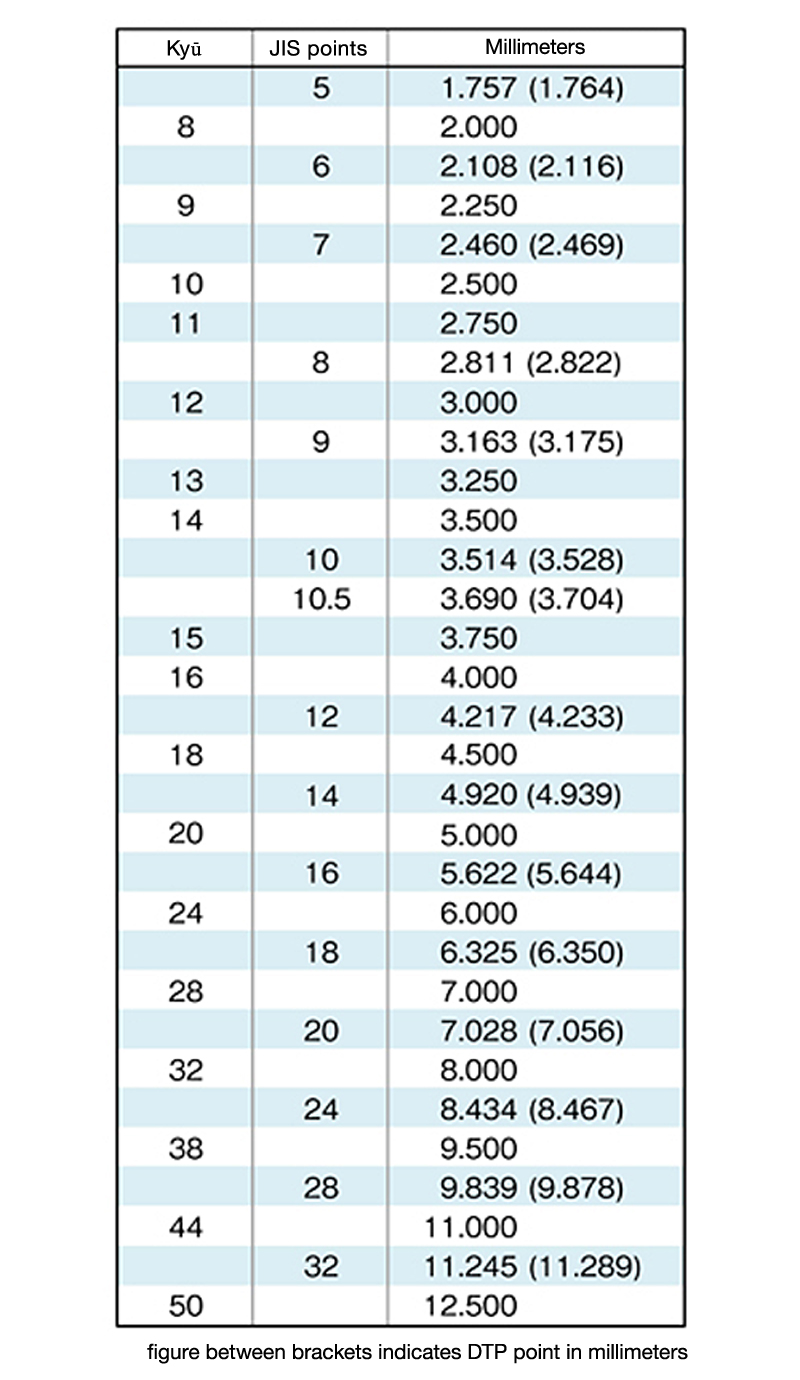Kyū, Ha, Point
級・歯・ポイント
Kyū・Ha・Pointo
CATEGORIES
Kyū (級) is a unit of measurement used to express the size of characters in photocomposition that is particular to Japan; it is equal to 0.25mm. It can also be written as “Q,” an abbreviation that is derived from the origin of its name, “quarter,” as in a quarter of a millimeter. Today characters have been digitized and almost no composition is done optically any more. While kyū is used for character size, Ha (歯, which can be abbreviated as “H”) is used for measurements of the space between characters and the space between lines. 1 ha is equal to 0.25mm, so it functions in the same way as character sizing. Early photocomposition machines generated type on printing paper that was rolled onto drums that were turned using cogwheels (歯車 haguruma in Japanese). Each cog (歯 ha) was 1 kyū in length (0.25mm), which gave the measurement its name.
Similarly, “points” are another unit for expressing the size of characters. This unit has been used since the era of movable type, though the standard size varies depending on the region and system in which it has been adopted. For example, 1 American point (pt) is 0.3514mm, while 1 Didot point, which is used primarily in Europe, is 0.3579mm. In Japan, the American point has been adopted by the JIS (Japanese Industrial Standard). In DTP, normally 1 point is treated as being 0.3528mm. These variations arose from differences in the underlying logics and historical circumstances of their creation.
In Japan, since Motoki Shōzō began his work with movable type printing, another unit has been used to express the size of characters: the gō (号). This unit is not used today, but the size of a 5-gō character is equal to a standard 10.5-point character used in PC software such as Microsoft Word. This is because the standard character size used in documents was 5-gō.
RELATED PAGES
- Comparison chart of character sizes

